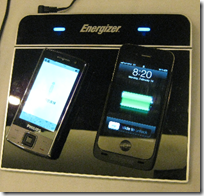Record producer Jimmy Iovine now chairman of Interscope and CEO of Beats by Dr Dre, says there are huge quality problems in the music industry. I listened to his talk during HP’s launch event for its TouchPad tablet and new smartphones.
“We’re trying to fix the degradation of music that the digital revolution has caused,” says Iovine. “Quality is being destroyed on a massive scale”.
So what has gone wrong? Iovine’s speech is short on technical detail, but he identifies several issues. First, he implies that 24-bit digital audio is necessary for good sound:
We record our music in 24-bit. The record industry downgrades that to 16-bit. Why? I don’t know. It’s not because they’re geniuses.
Second, he says that “the PC has become the de facto home stereo for young people” but that sound is an afterthought for most computer manufacturers. “No-one cares about sound”.
Finally, he says that HP working with, no surprise, his own company Beats by Dr Dre, has fixed the problem:
We have a million laptops with Beats audio in with HP … HP’s laptops, the Envy and the Pavilion, actually feel the way the music feels in the studio. I can tell you, that is the only PC in the world that can do that.
Beats Audio is in the Touchpad as well, hence Iovine’s appearance. “The Touchpad is a musical instrument” says Iovine.
I am a music and audio enthusiast and part of me wants to agree with Iovine. Part of me though finds the whole speech disgraceful.
Let’s start with the positive. It is true that the digital revolution has had mixed results for audio quality in the home. In general, convenience has won out over sound quality, and iPod docks are the new home stereo, compromised by little loudspeakers in plastic cabinets, usually with lossy-compressed audio files as the source.
Why then is Iovine’s speech disgraceful? Simply because it is disconnected from technical reality for no other reason than to market his product.
Iovine says he does not know why 24-bit files are downgraded to 16-bit. That is implausible. The first reason is historical. 16-bit audio was chosen for the CD format back in the eighties. The second reason is that there is an advantage in reducing the size of audio data, whether that is to fit more on a CD, or to reduce download time, bandwidth and storage on a PC or portable player.
But how much is the sound degraded when converted from 24-bit to 16-bit? PCM audio has a sampling rate as well as a bit-depth. CD or Redbook quality is 16-bit sampled at 44,100 Hz, usually abbreviated to 16/44. High resolution audio is usually 24/96 or even 24/192.
The question then: what are the limitations of 16/44 audio? We can be precise about this. Nyquist’s Theorem says that the 44,100 Hz sampling rate is enough to perfectly recapture a band-limited audio signal where the highest frequency is 22,500 Hz. Human hearing may extends to 20,000 Hz in ideal conditions, but few can hear much above 18,000 Hz and this diminishes with age.
Redbook audio also limits the dynamic range (difference between quietest and loudest passages) to 96dB.
In theory then it seems that 16/44 should be good enough for the limits of human hearing. Still, there are other factors which mean that what is achieved falls short of what is theoretically possible. Higher resolution formats might therefore sound better. But do they? See here for a previous article on the subject; I has also done a more recent test of my own. It is difficult to be definitive; but my view is that in ideal conditions the difference is subtle at best.
Now think of a PC or Tablet computer. The conditions are far from ideal. There is no room for a powerful amplifier, and any built-in speakers are tiny. Headphones partly solve this problem for personal listening, even more so when they are powered headphones such as the high-end ones marketed by Beats, but that has nothing to do with what is in the PC or tablet.
I am sure it is true that sound quality is a low priority for most laptop or PC vendors, but one of the reasons is that the technology behind digital audio converters is mature and even the cheap audio chipsets built into mass-market motherboards are unlikely to be the weak link in most computer audio setups.
The speakers built into a portable computer are most likely a bit hopeless – and it may well be that HPs are better than most – but that is easily overcome by plugging in powered speakers, or using an external digital to analog converter (DAC). Some of these use USB connections so that you can use them with any USB-equipped device.
Nevertheless, Iovine is correct that the industry has degraded audio. The reason is not 24-bit vs 16-bit, but poor sound engineering, especially the reduced dynamic range inflicted on us by the loudness wars.
The culprits: not the PC manufacturers as Iovine claims, but rather the record industry. Note that Iovine is chairman of a record company.
It breaks my heart to hear the obvious distortion in the loud passages during a magnificent performance such as Johnny Cash’s version of Trent Reznor’s Hurt. That is an engineering failure.















